Forest Fly Over, Part 3
Part 3 of the 3 parts in depth tutorial series – “Forest Fly Over”, In this part, Javier Pintor closes with the composition of the render output inside After Effects. I hope you enjoyed this series. See you on the next one.


Author: Javier Pintor
Javier Pintor has recently finished six months of 3d archviz school and work on preparing his portfolio. He has written several times for this blog and now I’m happy to present his 3 part Forest Fly Over Tutorial.
Tutorial Details, Part 3.
Software: After Effects
Difficulty: Intermediate
Completion Time: 1 hour (est.)
Resource Files Available at the Shop.
This is the continuation of Forest Fly Over, Part 2. We finished the 3ds max environment setup and have the render outputs, and now go into compositing it all together in After Effects. First I’ll show the finished animation once more, just so you can get into the mood before diving into the details.
And now, lets start…
5. Composite everything together in After Effects
Finally we have all the material we need to composite everything and create the final 10 seconds video sequence.
5.1. Import the footage, track the animation and replace the sky
Inside After Effects, let’s begging by creating a new composition by going to Composition, New Composition… I called it C_Main to keep things in order, set the size to 1280 by 545, frame rate to 30 and 10 seconds of duration.
Set the bit depth from 8 to 16bpc as our footage was render at 16bit EXR, in the next picture you can see where the option is. Import the rendered sequence by going to File, Import, File… let’s call it RGB for the RGB pass, duplicate it and rename it to zdepth (the reason to duplicate the sequence its because we need to change the alpha interpretation) then right click it, go to Interpret Footage, Main… and change the Alpha options to Ignore.
Click and drag both files into the timeline (the layer system works pretty much like in Photoshop) We need to extract the ZDepth channel using the Extractor tool from the ProEXR plugin which can be downloaded from fnord software website – www.fnordware.com. So select the ZDepth layer, go to Effects/3D Channel/EXtractoR, click in the R G B section under Channel Info and select Z for Red, Green and Blue, leave Alpha by default. Now we have to invert the colors by going to Effects/Channel/Invert. Change the blending mode to Screen and lower the layer opacity between 50 to 70 (is up to you) by hitting the letter T in your keyboard.
Hide the ZDepth layer and double click the RGB. We are going to capture the motion of the sequence and store the tracking information into a Null Object (import the 3ds Max camera can be a better option but it also requires extra plugins) so go to Layer/New/Null Object, with the RGB layer selected go to Window/Tracker, click Track Motion and a Track Point will appear, go to the last frame in the timeline and position the Track Point in the furthest mountain on the right of your image, as close as possible to the horizon, be careful that any other mountain overlap the track point during the animation. Then select the Null 1 in the Edit Target… option and hit the Analyze backward button.
When finish a window will pop-up asking in which dimensions to apply the tracking, select X and Y and hit OK. After, make sure the tracked motion is soft and smooth in the entire animation, if shakes or jump in some frame you will have to repeat the process and refine the Track Point.
Let’s go back to the Project window and load in the sky.jpg file, click and drag it to the timeline, just at the bottom of the layer stack, click in its drop-down menu under Parent option and select Null 1, now the sky is following properly the animation. In the following picture you can see the Position and Scale changes I have made, you can change them by hitting P for position or S for scale.
At this point you may noticed that the motion track is not as accurate as it could be, because the furthest mountain is not visible in the entire animation the Track Point get lost at some point, that is the reason why I encourage you to do the tracking as close as possible to the horizon. This issue can be fixed by tracking the motion twice from different points and parenting them together… anyway this problem is barely visible and even less after applying the fog, flare and all the other effects.
Clarified this point, let’s continue…
5.2. Creating clouds with Trapcode Particular
Next we have to do the particle clouds, for this matter we will use the plugin Trapcode Particular www.redgiantsoftware.com/products/all/trapcode-particular/ by Red Giant Software www.redgiantsoftware.com. Begin by importing the cloud.png file we did in Photoshop, click and drag it over the Create a new Composition button at the bottom of the Project window and rename it to C_Cloud, we need to extract the black component of the image so create a new solid by going to Layer/New/Solid… change the color to pure white and hit ok, move it to the bottom of the layer stack and in its dropdown menu under TrackMatte select Luma Matte “cloud.png”.
Go back to the C_Main composition, create a new solid and call it Particle, go to Effect/Trapcode/Particular. Under Emitter dropdown change the Emitter Type to Box and the Velocity to 0. We don’t need the particles to grow in time so, move the time indicator to the frame 1, set the Particles/sec to 0 and click the stopwatch button, then press the letter U, the Particles/sec option will appear in the layer stack, move backward one frame and set it to 4000.
Under the Emitter options, change the Size in X, Y and Z as indicated in the following image (you can play with this values to see what looks better for you) Set also a couple of key-frames for the Position XY and Z at frame 0 by hitting they stopwatches.
Drag and drop the C_Cloud composition from the Project window to the timeline and hide it. Select the Particle layer once again, go to the Particle drop-down inside the Effect Controls window, change the Particle Type to Sprite and under Texture/Layer, select C_Cloud, a warning window will pop-up, not a big deal so ignore it, in the next image you can see the rest of the options under Particle drop-down.
Let’s go back to the Emitter options, go to the second number 5 in the timeline and change the Position XY and Z as shown in the next image.
We have finished the particle system, you can always experiment with other options or values to achieve a different results.
5.3. Color grading, motion blur and lens effects
At this point we probably want to add a little bit of color correction to each individual layer so they play better together, as this point is very graphic and personal, I won’t explain anything, in the following set of images you can see the effects I used and what layers affect, express yourself.
Next is to apply some motion blur. Because motion blur is a heavy effect, meaning that can slow down the render time considerably, first thing we need to do is pre-compose the layers we wanted to be affected by it, in this case the ZDepth and the RGB layers so select them and go to Layer/Pre-compose… I called them C_MoBlur.
For the motion blur effect I used ReelSmart Motion Blur www.revisionfx.com/products/rsmb/ by RE:Vision Effects www.revisionfx.com, if you don’t have it you can use CC Force Motion Blur which come built in After Effects. With C_MoBlur layer selected go to Effect/RE:Vision Plug-ins/RSMB and set the Blur Amount to 0.70.
A couple of things left to go. We can now add an overall color correction, there is a couple of ways we can do it, by creating an Adjustment Layer on top, or pre-compose everything, I choose pre-compose, so select all the layers from the timeline by pressing Ctrl + A and then Ctrl + Shift + C, call it C_Layers. Now you can apply whatever tools you like to color correct the entire composition.
Now let’s add the final touch, a flare effect. Once again I’m using an external plugin called Optical Flares www.videocopilot.net/products/opticalflares/ by Video Copilot www.videocopilot.net because the built in lens flare effect is quite old but, if you like or don’t have any other plugin is an option. First create an adjustment layer by going to Layer/New/Adjusten Layer, then go to Effect/Video Copilot/Optical Flares. In Render Mode select Over Original so we can see the layer underneath, place the sun where you like the most, go to last frame in the timeline and hit the stopwatch for the Position XY, there are few ways to animate the flare effect, but let’s go for the traditional key-frame animation. Move back the time indicator and every second readjust the sun position till it will move out the frame. Trim the Adjustment Layer time bar by clicking and draging from its first frame to where the sun appears so that we won’t see any halo effect when the sun is not visible.
In the Preview BG Layer of the Optical Flares effect select C_Layers, then hit Options… to open the lens flare editor, tick Show BG to see the effect over the layer before selected. The interface is very clear and well designed so I will just show you the parameters I used.
5.4. Final render
Ok, first of all congratulations if you follow me on this tutorial without gettin bored or asleep. The last thing to do is the final render so, in your C_Main composition go to Composition/Make Movie… and as I like to have a lossless avi copy the only thing we need to do is click on Output To: and choose the directory where we want to render the final animation.
So here ends the tutorial. I have a hope that you enjoyed as well as I did, and remember if you have any question, don’t hesitate to drop me a line and I will be glad to answer as fast as possible.
Thanks,
J.Pintor
Tutorial Resource Files
This tutorial comes with a pack that you can grab from the shop. It contains the full 3 part tutorial, two 3dsmax 2010 scene files setup with MultiScatter or Particles and ready to render with V-Ray, final animation, after effects composition file and the original and postworked photos used to create the trees and sky.





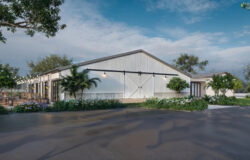
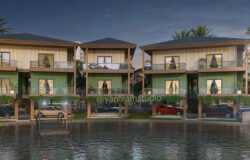





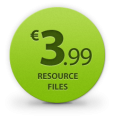




















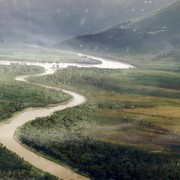
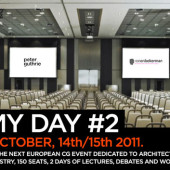
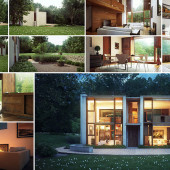
Thanks Jav…..
thanks friend, but you cant create video tutorials file?